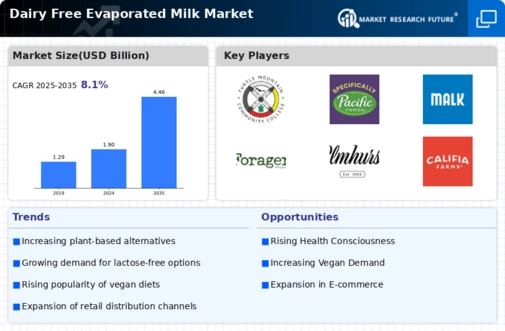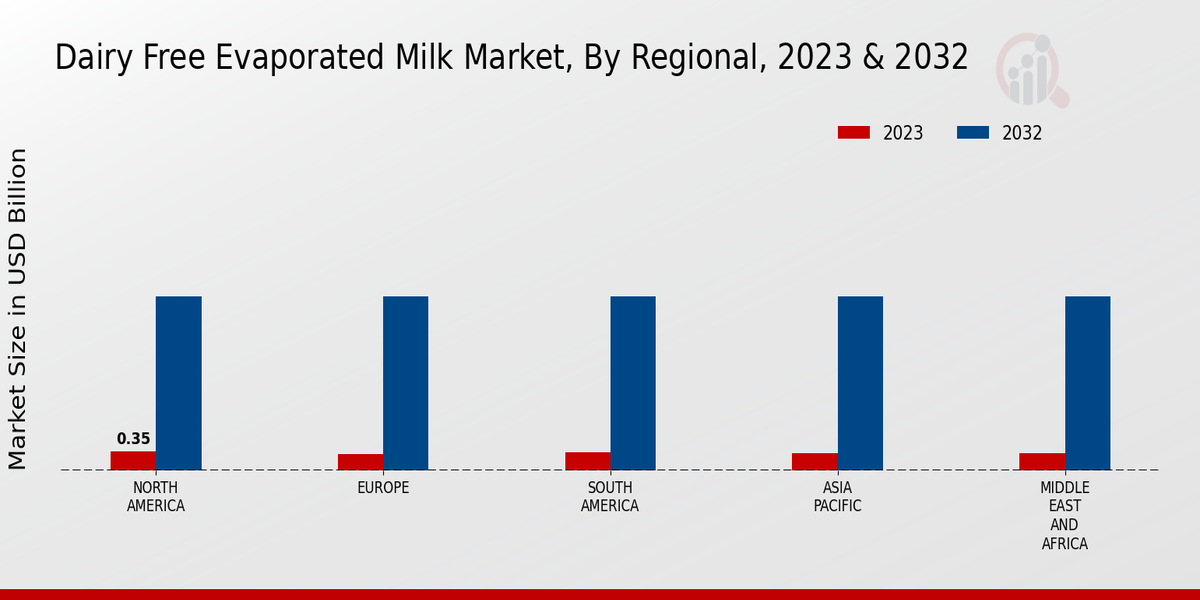Market Growth Projections
The Global Dairy Free Evaporated Milk Market Industry is poised for substantial growth, with projections indicating a rise from 1.9 USD Billion in 2024 to 4.46 USD Billion by 2035. This growth trajectory suggests a robust demand for dairy-free alternatives, driven by changing consumer preferences and increasing awareness of health and environmental issues. The anticipated CAGR of 8.08% from 2025 to 2035 underscores the market's potential as more consumers seek out dairy alternatives. This upward trend reflects a broader shift in the food industry towards inclusivity and diversity in dietary options, positioning dairy-free evaporated milk as a key player in the evolving marketplace.
Health and Wellness Trends
The Global Dairy Free Evaporated Milk Market Industry is experiencing a surge due to the heightened focus on health and wellness among consumers. Many individuals are increasingly seeking alternatives that offer lower cholesterol and fat content compared to traditional dairy products. This shift is supported by a growing body of research suggesting that plant-based diets can contribute to better health outcomes. As a result, the market is anticipated to grow at a CAGR of 8.08% from 2025 to 2035, indicating a robust demand for dairy-free options that align with health-conscious lifestyles. Manufacturers are responding by enhancing the nutritional profiles of their products, further driving market growth.
Innovative Product Development
Innovation within the dairy-free sector plays a crucial role in propelling the Global Dairy Free Evaporated Milk Market Industry forward. Companies are investing in research and development to create new flavors, formulations, and packaging solutions that cater to diverse consumer needs. This focus on innovation not only attracts new customers but also retains existing ones by offering unique and appealing products. The introduction of fortified dairy-free evaporated milk, enriched with vitamins and minerals, exemplifies this trend. As consumers seek more options that align with their dietary preferences, the market is likely to see continued growth, driven by these innovative developments.
Diverse Applications in Food Industry
The versatility of dairy-free evaporated milk in various culinary applications serves as a significant driver for the Global Dairy Free Evaporated Milk Market Industry. This ingredient is increasingly utilized in baking, cooking, and beverage formulations, appealing to both consumers and food service providers. As the food industry evolves, there is a notable trend towards incorporating dairy alternatives in recipes, which enhances flavor and texture without compromising dietary preferences. This trend is expected to contribute to the market's growth, with projections indicating a potential increase to 4.46 USD Billion by 2035. The adaptability of dairy-free evaporated milk positions it as a staple in modern kitchens.
Rising Veganism and Plant-Based Diets
The increasing adoption of veganism and plant-based diets significantly drives the Global Dairy Free Evaporated Milk Market Industry. As consumers become more health-conscious and environmentally aware, the demand for dairy alternatives rises. In 2024, the market is projected to reach 1.9 USD Billion, reflecting a shift in consumer preferences towards plant-based options. This trend is not merely a fad; it appears to be a long-term lifestyle change, influencing purchasing decisions across various demographics. Consequently, companies are innovating to create diverse dairy-free products that cater to this growing segment, thereby expanding their market presence.
Sustainability and Environmental Concerns
Sustainability and environmental awareness are increasingly influencing consumer choices, thereby impacting the Global Dairy Free Evaporated Milk Market Industry. As concerns about climate change and animal welfare grow, many consumers are opting for plant-based alternatives that are perceived as more sustainable than traditional dairy. This shift is prompting manufacturers to adopt eco-friendly practices in sourcing and production, which resonates with environmentally conscious consumers. The market's expansion is likely to be fueled by this alignment with sustainability goals, as consumers prioritize products that contribute to a healthier planet. This trend is expected to solidify the position of dairy-free alternatives in the broader food market.














